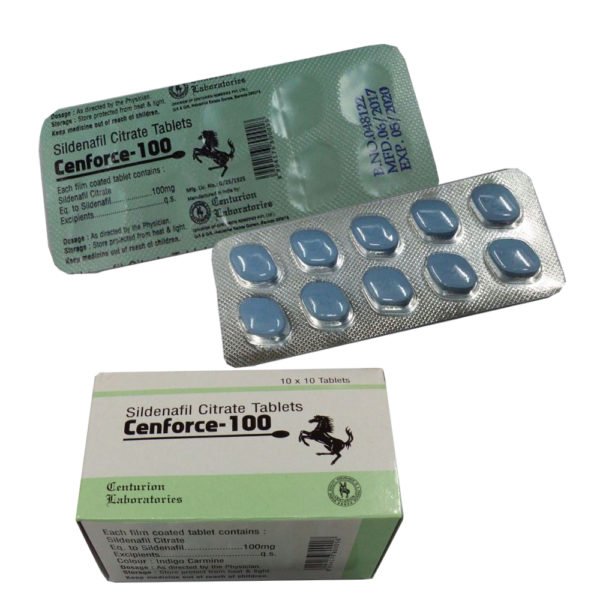Stye tablets. Stye Treatment: Are Antibiotics the Best Option for Eye Styes?
What is a stye and how does it affect your eye. How effective are antibiotics for treating styes. What are the best home remedies for relieving stye symptoms. When should you see a doctor about a stye.
Understanding Styes: Causes and Symptoms
A stye, medically known as a hordeolum, is a painful bump that develops on the eyelid due to a bacterial infection. These unsightly and uncomfortable eye conditions can occur on either the upper or lower eyelid, and their size can range from a tiny pimple to a pea-sized lump. While styes are generally not a cause for serious concern, they can lead to noticeable swelling and irritation of the affected eye.
What are the common symptoms of a stye? The most prevalent signs include:
- A visible bump on the eyelid
- Pain and swelling in the affected area
- Redness and irritation of the eye
- Crusty eyelids
- A persistent sensation of having something in the eye
- Increased sensitivity to light
- Watery eyes
It’s important to note that while styes themselves are not contagious, the bacteria causing them can spread. To prevent this, avoid sharing face towels or cosmetics with others, especially when you have an active stye.

Types of Styes: Internal vs. External
Styes can be classified into two main types based on their location:
- Internal styes: These occur on the inside of the eyelid and are typically caused by an infection in the oil-producing glands lining the eyelid. Internal styes are less common than their external counterparts.
- External styes: These develop along the edge of the eyelid and are usually the result of an infection in the eyelash follicles. External styes are more frequently encountered than internal ones.
The Natural Course of Styes: Do They Resolve on Their Own?
One of the most common questions people have about styes is whether they will go away without treatment. In most cases, styes are self-limiting conditions that resolve on their own within 1-2 weeks. However, the duration can vary depending on the severity of the infection and individual factors.
While many styes will heal naturally, some may require medical intervention, particularly if they are recurring or persistent. In such cases, a healthcare provider may recommend antibiotic treatment to expedite healing and prevent further infection.

Antibiotic Treatment for Styes: When Is It Necessary?
Although most styes don’t require antibiotic treatment, there are situations where medication may be prescribed. When are antibiotics typically recommended for styes?
- For recurring stye infections
- When a stye persists beyond the usual healing time
- If the infection shows signs of spreading to other parts of the eye
In cases where antibiotics are deemed necessary, healthcare providers may prescribe either topical or oral medications, depending on the severity and nature of the infection.
Topical Antibiotics for Styes
Topical antibiotics are often the first line of treatment for persistent styes. These medications come in the form of creams or ointments applied directly to the affected area. The most commonly prescribed topical antibiotic for styes is erythromycin. How effective are topical antibiotics for treating styes? While they can help clear the infection faster, it’s important to follow the prescribed treatment regimen carefully for optimal results.
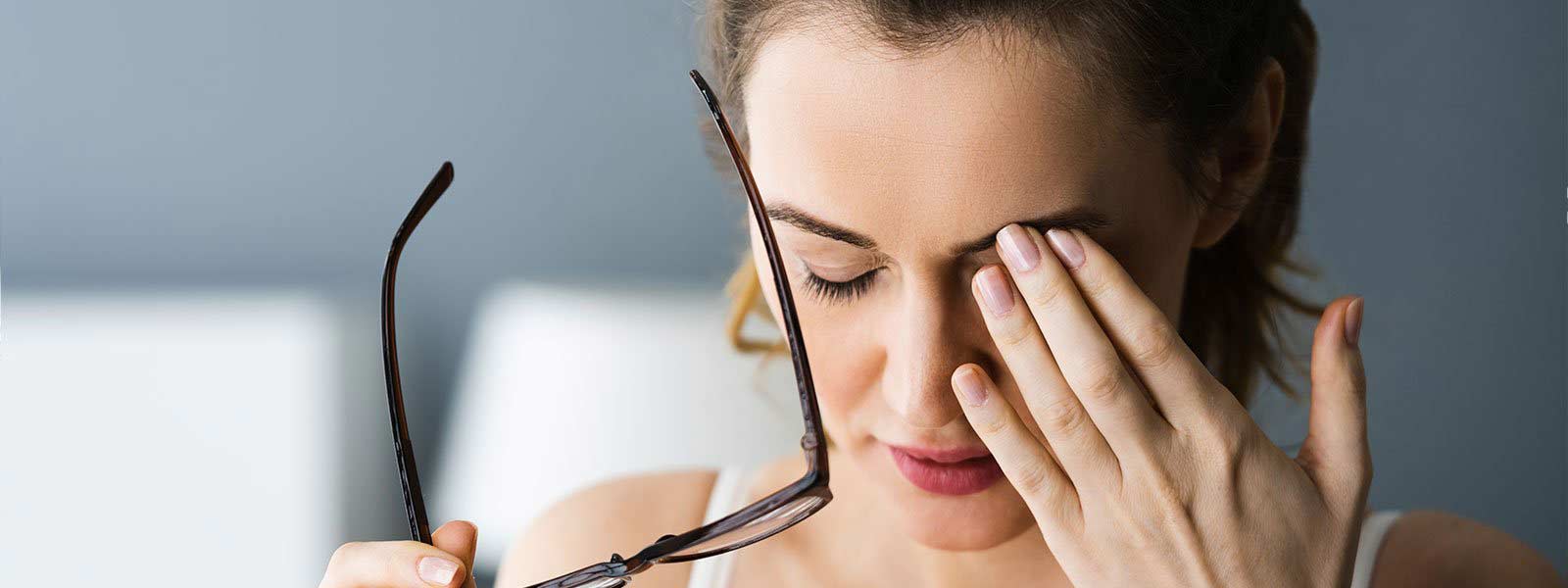
Oral Antibiotics for Styes
In more severe cases or when the infection appears to be spreading, oral antibiotics may be prescribed. The most frequently used oral antibiotics for stye treatment include:
- Doxycycline
- Tetracycline
- Cephalosporin
- Amoxicillin
It’s crucial to complete the full course of antibiotics as prescribed, even if the stye appears to have resolved. This helps prevent the infection from recurring or developing antibiotic resistance.
Side Effects of Stye Medications: What to Expect
While antibiotics can be effective in treating stubborn styes, they may come with some side effects. What are the common side effects of stye medications?
For topical antibiotics, patients may experience:
- Burning sensation at the application site
- Mild irritation of the eye area
Oral antibiotics might cause:
- Nausea
- Constipation or diarrhea
- Decreased appetite
While these side effects are typically mild, it’s essential to be aware of more serious reactions. If you experience symptoms such as rashes, difficulty breathing, swelling in the throat or face, or any other unusual or severe symptoms, seek immediate medical attention as these could indicate an allergic reaction.
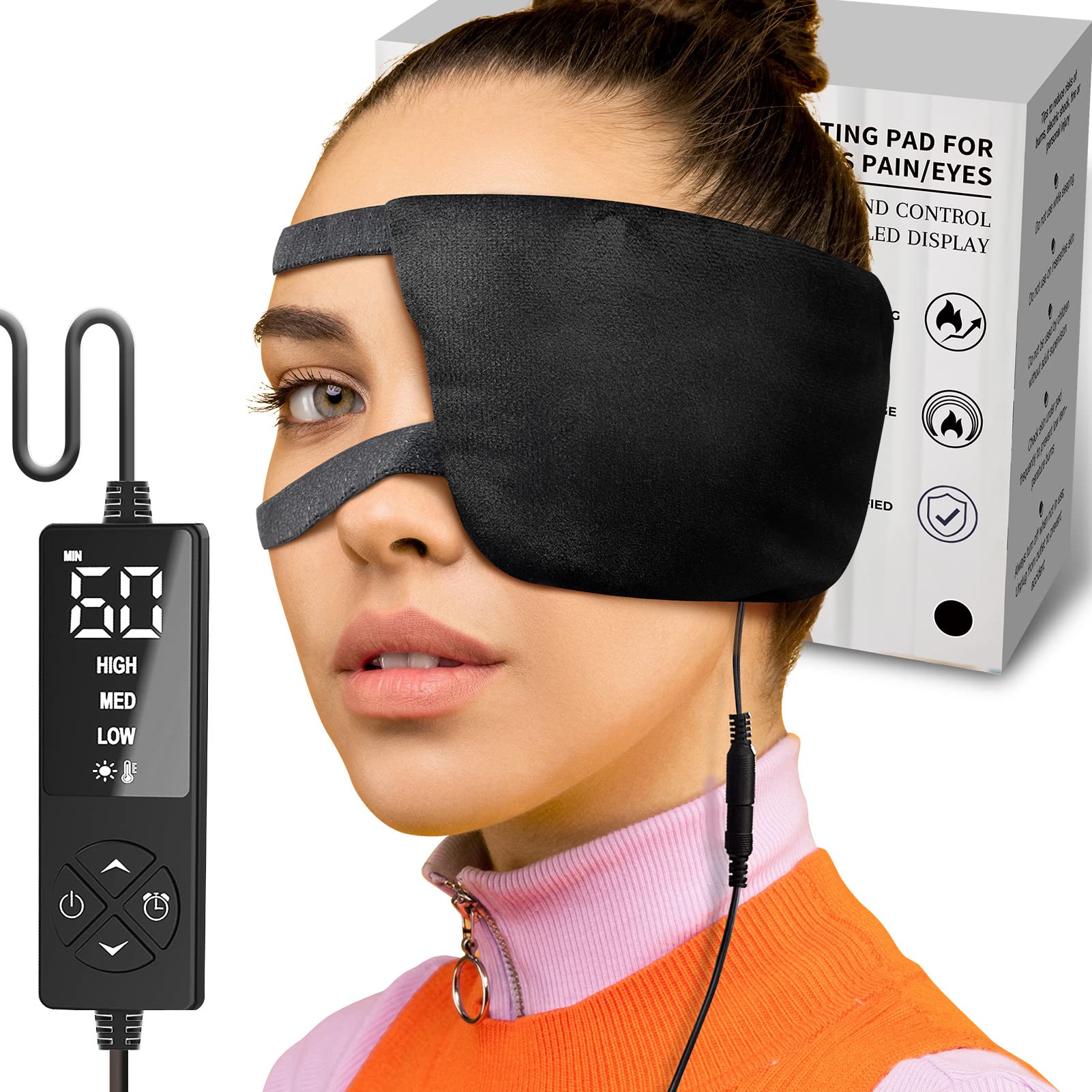
Effective Home Remedies for Stye Relief
While antibiotics may be necessary in some cases, many styes can be effectively managed with home remedies. These treatments can help alleviate discomfort and promote faster healing. What are some of the most effective home remedies for styes?
Warm Compress Therapy
Applying a warm compress is one of the most recommended home treatments for styes. How do you use a warm compress for a stye?
- Start by ensuring your eye is clean and free of makeup.
- Soak a clean washcloth in warm water and wring out excess moisture.
- Gently apply the warm cloth to the affected eye, holding it in place for 10-15 minutes.
- Repeat this process 3-4 times daily or as needed for relief.
The warmth helps to reduce pain and encourages the stye to drain naturally. Remember to use gentle pressure and avoid rubbing or scrubbing the eye area.
Tea Bag Treatment
Similar to a warm compress, a warm tea bag can help reduce swelling and irritation around a stye. Which types of tea are best for this purpose? Black, white, or green tea bags are typically recommended due to their anti-inflammatory properties.

To use this method:
- Steep a tea bag in hot water as you normally would.
- Allow the tea bag to cool until it’s warm but not hot.
- Apply the warm tea bag to the affected eye for 5-10 minutes.
- Discard the tea bag after use to prevent contamination.
Maintaining Proper Eye Hygiene
Good eye hygiene is crucial in both preventing and managing styes. How can you maintain proper eye hygiene?
- Wash your hands thoroughly before touching your eyes or face.
- Clean your eyes daily with a gentle eye wash or cleanser.
- Remove all makeup before going to bed.
- Avoid touching or rubbing your eyes unnecessarily.
Some healthcare providers recommend using diluted baby shampoo as a gentle cleanser for the eye area. Always consult with your doctor before trying new eye care products, especially if you have sensitive skin or eyes.
Lifestyle Adjustments to Promote Stye Healing
In addition to home remedies, certain lifestyle adjustments can help promote faster healing of styes and prevent future occurrences. What are some key lifestyle changes that can help with stye management?
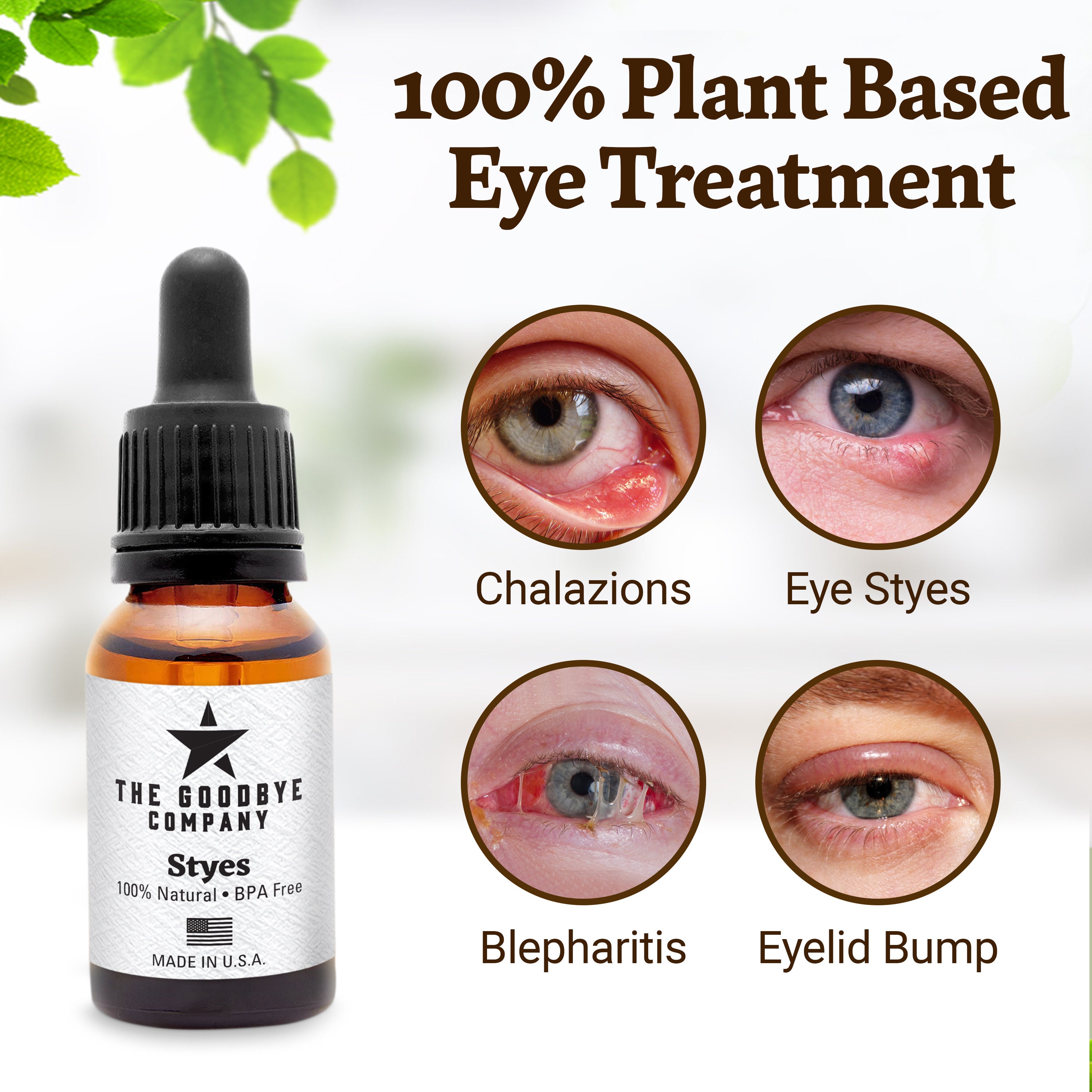
Avoiding Makeup During Stye Treatment
When dealing with a stye, it’s best to avoid wearing eye makeup, especially mascara and eyeliner. These products can irritate the affected area and potentially introduce more bacteria. If you must wear makeup, what precautions should you take?
- Use only clean makeup brushes and applicators
- Ensure all cosmetic products are not expired or contaminated
- Never share cosmetic products with others
- Remove all makeup thoroughly at the end of the day
Managing Contact Lens Wear
If you wear contact lenses, you may need to adjust your habits while dealing with a stye. How should contact lens wearers manage their eyewear during stye treatment?
- If possible, avoid wearing contact lenses until the stye has healed
- If you must wear lenses, ensure they are properly cleaned and disinfected
- Limit the duration of contact lens wear
- Always wash your hands thoroughly before handling contact lenses
- Consider switching to daily disposable lenses during the healing process
When to Seek Medical Attention for a Stye
While most styes are harmless and resolve on their own, there are situations where medical intervention may be necessary. When should you consult a healthcare provider about a stye?

- If the stye persists for more than two weeks without improvement
- If you experience severe pain or swelling
- If your vision becomes affected
- If you develop a fever or chills
- If you have recurring styes
- If the stye appears to be spreading or affecting other parts of your face
In these cases, a healthcare provider can assess the situation and determine if additional treatment, such as antibiotics or drainage, is necessary.
Preventing Future Styes: Key Strategies
While it’s not always possible to prevent styes entirely, there are several strategies you can employ to reduce your risk of developing them. What are some effective ways to prevent styes?
- Practice good hand hygiene, washing your hands frequently and avoiding touching your eyes
- Remove eye makeup thoroughly before bed
- Replace eye makeup regularly, especially mascara and eyeliner
- Clean your eyelids regularly with a gentle cleanser
- Avoid sharing towels, washcloths, or cosmetics with others
- Manage conditions that may increase your risk of styes, such as blepharitis or rosacea
- Use clean pillowcases and change them frequently
- If you wear contact lenses, follow proper hygiene and care instructions
By incorporating these practices into your daily routine, you can significantly reduce your chances of developing styes and maintain overall eye health.

Understanding the Role of Diet in Stye Prevention
While there’s no specific diet that can prevent styes, maintaining overall health through proper nutrition may help support your immune system and reduce the risk of infections. What dietary considerations might be beneficial for eye health and stye prevention?
- Consume foods rich in omega-3 fatty acids, such as fish, flaxseeds, and walnuts, which may help reduce inflammation
- Incorporate vitamin A-rich foods like sweet potatoes, carrots, and leafy greens to support eye health
- Ensure adequate hydration to help flush out toxins and maintain overall health
- Consider probiotics to support a healthy immune system
- Limit processed foods and sugar, which may contribute to inflammation in the body
While these dietary choices may not directly prevent styes, they can contribute to overall eye health and immune function, potentially reducing your susceptibility to infections.
The Connection Between Stress and Stye Development
While stress itself doesn’t directly cause styes, it can weaken your immune system, making you more susceptible to infections, including those that lead to styes. How can managing stress potentially help in preventing styes?

- Practice stress-reduction techniques such as meditation, deep breathing, or yoga
- Ensure you’re getting adequate sleep, as lack of sleep can impact immune function
- Engage in regular physical activity, which can help reduce stress and boost overall health
- Consider talking to a mental health professional if you’re experiencing chronic stress
By managing stress effectively, you may be able to support your body’s natural defenses against infections, including those that can lead to styes.
Long-term Eye Health: Beyond Stye Management
While managing and preventing styes is important, it’s also crucial to consider your overall eye health. What are some key practices for maintaining long-term eye health?
- Schedule regular eye exams, even if you don’t wear corrective lenses
- Protect your eyes from UV radiation by wearing sunglasses outdoors
- Take regular breaks when working on digital devices to prevent eye strain
- Stay hydrated to support tear production and overall eye health
- Quit smoking or avoid secondhand smoke, as it can increase the risk of various eye problems
- Maintain a balanced diet rich in vitamins and minerals that support eye health
- Be aware of your family history of eye conditions and discuss any concerns with your eye care professional
By incorporating these practices into your lifestyle, you can help ensure the long-term health of your eyes, reducing the risk of styes and other eye-related issues.

Antibiotics for Styes: Are They The Best Treatment?
Though they can be unsightly and uncomfortable, styes typically are not cause for concern.
In fact, most styes go away on their own or with the help of some basic home remedies.
However, in some cases, it’s necessary to take antibiotics for a stye.
In this article, we’ll explore what a stye is, antibiotics and treatments for styes, how to prevent a stye, and when to see a doctor about a bump on your eyelid.
What Is a Stye?
A stye (or hordeolum) is a painful bump caused by a bacterial infection that develops on the eyelash line of the eyelid.
It may appear on the upper or lower eyelid or underneath the eyelid.
A stye can be as tiny as a pimple or as large as the size of a pea.
It can also lead to swelling of the entire eyelid and make the eye appear red, inflamed, and irritated.
Common stye symptoms include:
- A bump on the eyelid
- Eyelid pain and swelling
- Eye irritation and redness
- Crusty eyelids
- A constant feeling of having something in the eye
- Sensitivity to light
- Watery eyes
Although styes themselves are not contagious, you should avoid sharing face towels or cosmetics with others to avoid spreading the bacteria that caused the stye.
THINK YOU MAY HAVE A STYE? Chat with a medical provider from home.
Chat Now
Internal stye
As the name suggests, internal styes (also called internal hordeolums) occur on the inside of the eyelid.
Most happen when oil-producing glands that line the eyelid become infected.
Internal styes are less common than external ones.
External stye
External styes (or external hordeolums) occur along the lining of the eyelid.
Most are infections of the eyelash follicles.
Will a Stye Go Away on Its Own?
Styes are rarely serious and typically resolve on their own within 1-2 weeks.
In some cases, however, a doctor may prescribe an antibiotic ointment or oral antibiotic to help clear the infection faster or prevent further infection.
Antibiotics for a Stye
Most styes don’t require antibiotics.
But in the case of recurring infections or a stye that won’t go away, a topical antibiotic cream or ointment may be necessary.
Erythromycin is the most commonly prescribed topical antibiotic for styes.
If the bacterial infection spreads to other parts of the eye or is persistent even after using the antibiotic cream, a doctor may prescribe oral antibiotics.
Common ones prescribed for styes include:
- Doxycycline
- Tetracycline
- Cephalosporin
- Amoxicillin
Even if a stye goes away, be sure to complete the full course of antibiotics to prevent the infection from coming back.
Common side effects of stye medication
Side effects of stye medication are usually mild.
Topical antibiotics may cause burning or irritation where applied.
Oral antibiotics may cause nausea, constipation, diarrhea, or decreased appetite.
However, if you experience rashes, trouble breathing, swelling in the throat or face, or any other abnormal symptoms or abrupt changes, contact your healthcare provider immediately and seek emergency medical care, because those are signs that you may be having an allergic reaction.
Other Remedies for a Stye
Home remedies may help ease the discomfort of a stye and even help the stye go away.
The following treatments often help.
Use a warm compress
Warm compresses may help ease pain and encourage the stye to drain.
Before using, make sure the eye is clean and free of any makeup.
Soak a clean washcloth in warm water and wring it out.
Use this to apply gentle pressure to the stye. Do not rub or scrub.
Repeat throughout the day as needed for relief.
Use a warm tea bag
Similar to a warm compress, a warm tea bag may help reduce swelling and irritation around a stye.
Black, white, or green tea may be the best types of teas for this use.
Steam a tea bag and let it cool until warm, then apply it to the affected eye.
To avoid contamination, do not reuse the same tea bag.
Frequently clean the area
Leaving makeup on for extended periods of time or not washing your face before bed may increase the risk of styes.
In order to avoid this, clean your eyes daily with a gentle eye wash or cleanser. (Sometimes doctors recommend baby shampoo.)
Before washing your eyes, wash your hands.
Also, avoid touching your eyes and face more than is necessary.
Avoid makeup
If you have a stye, it’s best to avoid makeup, especially mascara and eye liner.
If you must wear it, use clean makeup brushes to apply products that are not outdated or contaminated.
Do not share cosmetic products with anyone, and do not share or reuse face towels or washcloths.
Take out contact lenses
Contact lenses may increase eye irritation if you have a stye, so avoid wearing them if possible.
If you must wear them, ensure that they are properly cleaned, and keep them on for as short a period of time as possible.
Always clean your hands thoroughly before touching your eyes and putting in or removing contact lenses.
Try over-the-counter medications
If a stye is causing pain, over-the-counter (OTC) pain medications like ibuprofen (Advil) or acetaminophen (Tylenol) may provide some relief.
While you can also find OTC eye drops that help to relieve itching or dry eyes, these will not cure or treat styes.
Lightly massage the area
If your eye is crusty or dry, gently massaging the area may help alleviate some discomfort.
Wash your hands thoroughly.
Place a warm washcloth over the affected area and use gentle circular motions.
Do not rub or scrub the area, and never try to pop or break a stye.
THINK YOU MAY HAVE A STYE? Chat with a medical provider from home.
Chat Now
Stye Prevention
Having a stye once can increase your risk of developing one again in the future.
Still, some basic habits may help reduce the risk of future styes:
- Always remove makeup properly and cleanse your eyes, especially before sleep.
- Never share makeup and replace cosmetics every 2-3 months to prevent bacterial contamination.
- Thoroughly clean your hands before touching your eyes or inserting contact lenses.

- Do not share face towels, washcloths, or other hygiene products.
When to See a Doctor
If you notice a bump on your eyelid or have any symptoms associated with a stye, contact your doctor for a proper diagnosis.
Some other eye conditions have some similar symptoms and require different treatments.
How K Health Can Help
Did you know you can access online urgent care with K Health?
Check your symptoms, explore conditions and treatments, and if needed, text with a healthcare provider in minutes.
K Health’s AI-powered app is based on 20 years of clinical data.
Frequently Asked Questions
Do you need an antibiotic for a stye?
Not all styes require antibiotics. Your doctor may prescribe an oral antibiotic or a topical antibiotic if your symptoms do not resolve or if you have recurring styes.
Which antibiotic is best for eyelid infection?
Your doctor will consider your current health status, symptoms, and other medications you take to prescribe the best antibiotic for your stye. Common antibiotics for eye infections include erythromycin, doxycycline, amoxicillin, and cephalosporin.
When do styes need antibiotics?
A stye may require an antibiotic if it takes longer than one week to go away, if symptoms worsen, or if the infection spreads.
Is there an over-the-counter antibiotic for styes?
Antibiotics are not available over the counter in the U.S. You must have a prescription from a licensed healthcare provider to obtain any antibiotic.
K Health articles are all written and reviewed by MDs, PhDs, NPs, or PharmDs and are for informational purposes only. This information does not constitute and should not be relied on for professional medical advice. Always talk to your doctor about the risks and benefits of any treatment.
K Health has strict sourcing guidelines and relies on peer-reviewed studies, academic research institutions,
and medical associations. We avoid using tertiary references.
Hordeolum. (2021).
https://www.ncbi.nlm.nih.gov/books/NBK441985/Stye.
 (2021).
(2021).
https://www.ncbi.nlm.nih.gov/books/NBK459349/Styes and Chalazia (Inflammation of the Eyelid): Overview. (2019).
https://www.ncbi.nlm.nih.gov/books/NBK557372/
7 ways to treat or get rid of a stye
Styes stem from a bacterial infection and usually resolve, with or without treatment, in 1–2 weeks. Warm compresses and careful cleaning may help relieve discomfort.
Warm compresses and careful cleaning may help relieve discomfort.
A stye is a painful, inflamed bump that develops on an eyelid or at the base of the eyelashes. The medical name for a stye a hordeolum,
However, there are a number of things a person can do to get rid of a stye. Keep reading to learn more about them, as well as some causes, symptoms, and reasons to see a doctor.
The following home remedies may help ease the pain of a stye:
1. Warm compresses
Share on PinterestA number of home remedies may ease the pain of a stye.
Put a very warm, but not hot or scalding, wet compress on the eye for short periods of time a few times per day.
This can help open up the glands and drain the stye more quickly. It may temporarily ease the pain.
However, one study found no conclusive evidence that this technique helps heal the stye.
2. Eye hygiene
It is important to keep the eye area clean. Styes are contagious, which means that it is possible to spread the bacteria to other people and to other parts of the eye.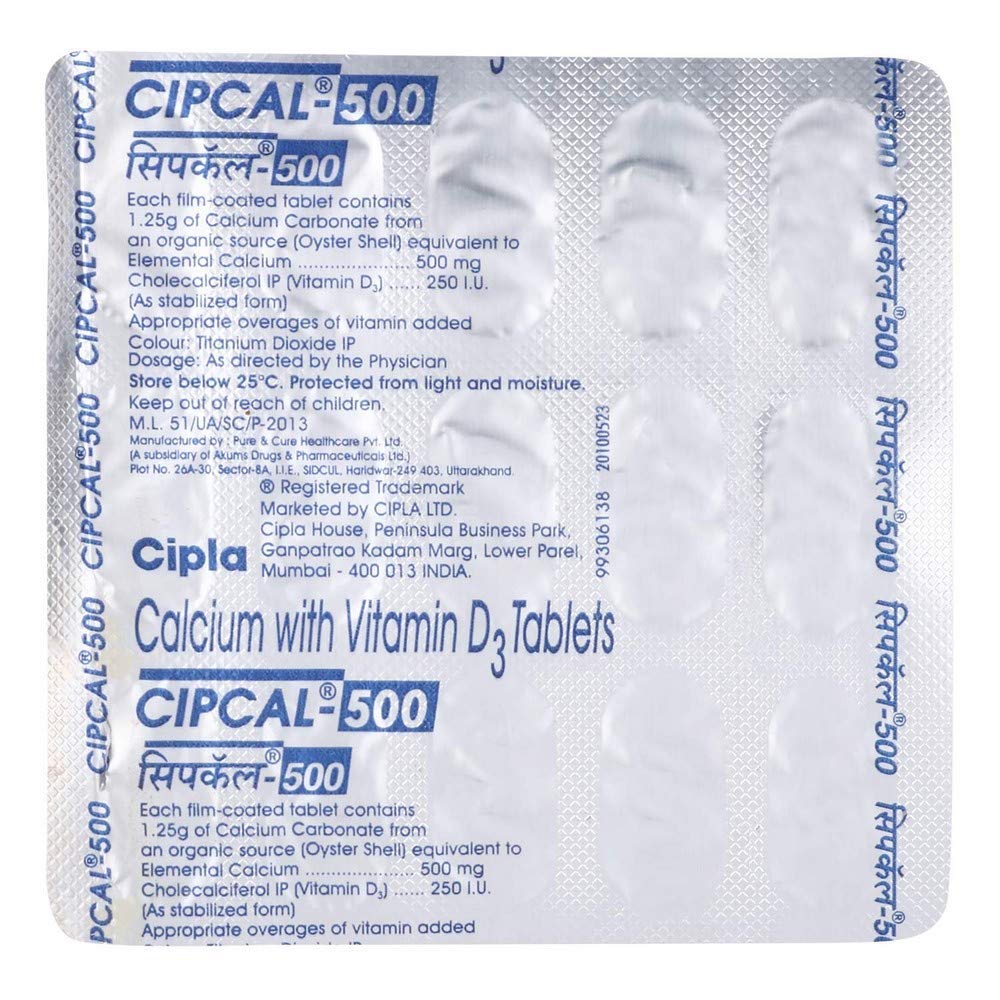 Bacteria that get into the stye can worsen the infection and slow healing.
Bacteria that get into the stye can worsen the infection and slow healing.
Following these tips can help prevent the infection from getting worse:
- Avoid sharing any eye care products, including eye drops and eye makeup.
- Do not try to pop or squeeze the stye.
- Avoid rubbing or touching the eyes, unless to apply medication or compresses.
- Wash the hands with soap and water before and after touching the eye to apply medication or compresses.
- Gently rinse the eye if dirt or dust gets under the eyelid.
- Avoid wearing contact lenses until the stye heals.
3. Pain medication
Over-the-counter (OTC) pain medication may also ease the pain of a stye.
Nonsteroidal anti-inflammatory drugs such as ibuprofen can reduce inflammation and might therefore help with burning and swelling.
4. OTC stye remedies
Many drugstores sell eye drops that may help relieve the pain of styes. These remedies will not heal the stye, but they may help ease the pain.
Only apply these remedies with clean hands, and do not allow the tip of the bottle to touch the eye.
Very large styes and those that do not go away on their own may need medical treatment. A doctor may recommend one of the following options:
5. Antibiotics
Antibiotics can kill the bacteria that cause a stye to grow. This prevents the stye from spreading and eases the pain.
It is important to use the right antibiotic for the specific bacterium infecting the eye, so a person should not reuse old antibiotics. In most cases, a doctor will recommend antibiotics in the form of eye drops or eye cream.
In rare cases, a stye can cause a systemic infection that spreads to other areas of the body. People with weak immune systems are more vulnerable to such infections.
When this type of infection occurs, a person may need oral or intravenous antibiotics.
6. Steroids
Steroids can help the body heal itself more quickly. A doctor may inject a steroid into the stye to promote healing and reduce pain.
Steroids in the form of topical creams and eye drops may also help, but a person should talk to a doctor before trying these remedies.
7. Surgery
When a stye does not go away or turns into a chalazion, a doctor may recommend surgery. A chalazion is similar in appearance to a stye, but it results from a blocked oil gland rather than an infected oil gland.
A simple procedure, which a person usually undergoes under local anesthetic, can drain the stye. Draining it may also prevent the stye from coming back.
An external stye develops when one of the hair follicles of the eyelashes becomes infected. Internal styes affect the underside of the eyelid.
The bacterium Staphylococcus aureus causes most styes, though other bacteria, including other types of staph — such as Staphylococcus epidermis — can also cause styes.
Anyone can get a stye, because most people carry the type of staph that causes the infection.
Anything that causes these bacteria to spread to the eyes can increase the risk of developing a stye.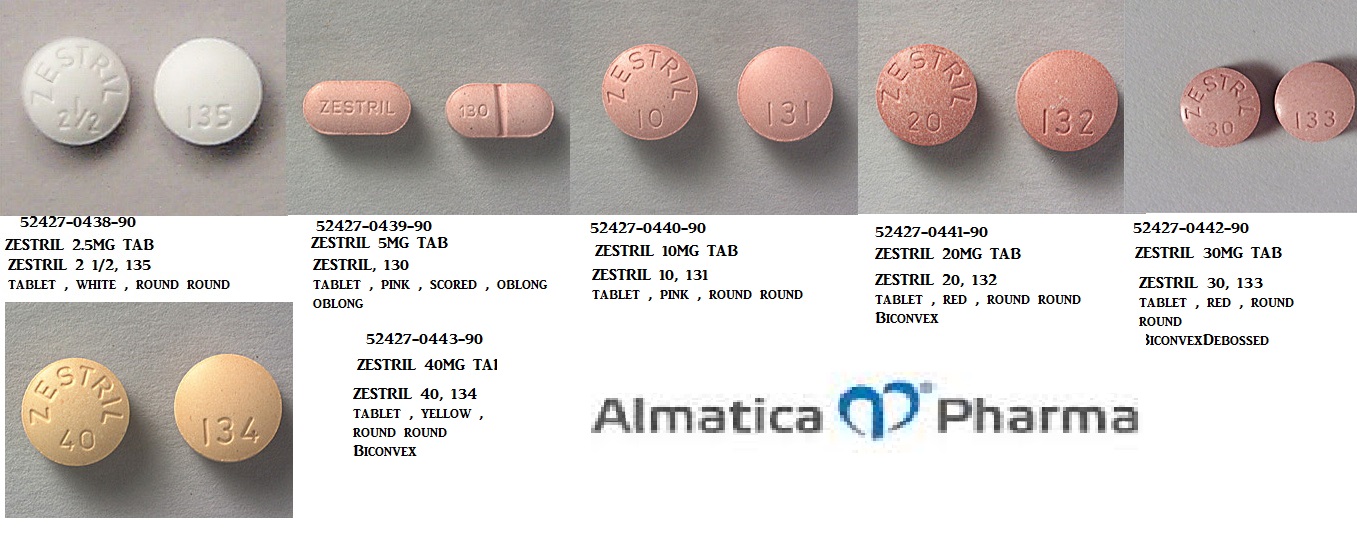 Some potential risk factors include:
Some potential risk factors include:
- having a weak immune system due to diabetes or another medical condition
- having blepharitis, a condition that causes skin irritation on the eyelid
- having a previous history of styes
- having high serum lipids
- having a skin condition such as rosacea
- sharing eye makeup with someone who has a stye
- using makeup or eye care products that irritate the eyes or block the hair follicles of the eyelids
A stye is a painful bump or lump near the eye. However, it may take several days for the bump to grow large enough to be visible.
Some people notice pain, burning, or irritation in the eye area before the bump appears.
Some other symptoms of a stye include:
- a red bump or lump that may resemble a pimple at either the base of the eyelashes or under the eyelid
- a sensation that something is in the eye
- sensitivity to light
- difficulty fully opening the eye, especially if it is very swollen
- oozing or irritation
A similar condition called a chalazion appears when the oil glands of the eyelid become clogged. Some chalazia are painless. These bumps can grow very large, and they sometimes appear after a stye heals.
Some chalazia are painless. These bumps can grow very large, and they sometimes appear after a stye heals.
Learn more about the differences between a chalazion and a stye here.
A person should see a doctor if:
- a stye does not get better with home treatment
- other signs of an infection, such as a fever, develop
- a baby or very young child has a stye
- a person with a stye has a recent history of eye injuries, such as being poked in the eye
- a person frequently gets styes or often experiences eyelid irritation
- a person with a stye has trouble seeing
- the eyelid swells shut
- there is blood oozing from the eyelid or the stye
Although most styes do not require medical treatment, a doctor can often prescribe antibiotics or pain relief medication to ease the symptoms and quickly clear the infection.
If symptoms interfere with daily life or become very painful, it is best to see a doctor.
Styes can be painful, but they are not usually dangerous. Home treatment is usually safe and effective.
Home treatment is usually safe and effective.
For larger styes, surgical and antibiotic treatments are available.
Sometimes, a more serious condition may appear to be a stye, so if the symptoms do not improve or seem very severe, do not delay consulting a doctor.
What medicines to treat barley on the eye? – Provincial pharmacies
Barley on the eye is not only a cosmetic defect, it is a purulent inflammatory disease of the eyelid, which can even lead to visual impairment. Therefore, it is necessary to treat barley if it appears on the eye.
How does barley show up?
At first, barley appears in the form of a small pimple, but over time, the neoplasm grows and causes severe discomfort. A head with pus appears on it, which in no case can be squeezed out on its own.
In the area of the future abscess, swelling, redness and itching may appear. Combing the lesion, which is usually done by young children, can cause re-infection and multiple development, including in both eyes.
There is also tearing, foreign body sensation, pain when blinking, and swelling.
Causes of development
- neglect of eye hygiene rules
- weakened immune system
- beriberi
- stress
- hypothermia
- hormonal imbalance
- hereditary predisposition
- diabetes mellitus
- blepharitis (inflammation of the edge of the eyelids)
- conjunctivitis
- pathology of the endocrine system
- diseases of the digestive system
Barley species
External barley is an inflammation of the hair follicle at the edge of the eyelid. A mature abscess spontaneously comes out 3-4 days after the first symptoms appear.
Internal barley – inflammation of the glands on the inside of the eyelid. The abscess is opened from the side of the conjunctiva, also for 3-4 days.
How to treat barley on the eye?
It is advisable to start treatment at an early stage, when itching and redness have just appeared. If anti-inflammatory and antibacterial treatment is prescribed at the initial stages, then at the later stages, after opening the capsule, treatment with an antiseptic is necessary to prevent re-suppuration.
If anti-inflammatory and antibacterial treatment is prescribed at the initial stages, then at the later stages, after opening the capsule, treatment with an antiseptic is necessary to prevent re-suppuration.
Warm compresses. You can use warm objects that hold the temperature. But here it is important to remember that heat can aggravate the situation when exposed to the abscess, so this method can only be used at the initial stage.
You can also make compresses with alcohol. To do this, soak the sterile material and leave it on the eye for 15-20 minutes.
Rubbing. Use the solution “Furacilin”: it helps to prevent the spread of infection and reduces inflammation. You can wipe your eyes with an interval of several hours.
Eye drops. You need to choose antibiotics. They are instilled 3 to 6 times a day to fight germs and prevent the process from spreading.
How to get rid of barley when an abscess appears?
How to properly treat barley on the eye should only be determined by a doctor.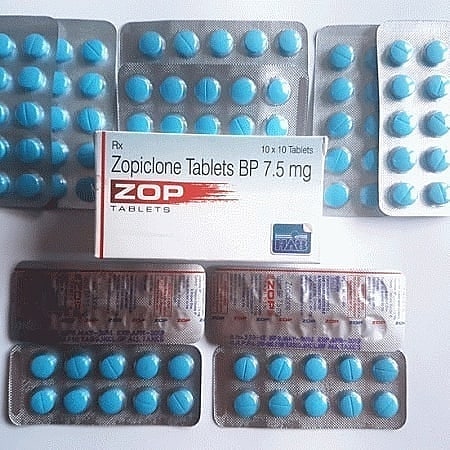 Since the cause of the pathology is infection with bacteria, antibiotics are prescribed. With multiple barley, in the presence of high fever and concomitant infection, systemic use of antibiotics and nonsteroidal drugs is necessary.
Since the cause of the pathology is infection with bacteria, antibiotics are prescribed. With multiple barley, in the presence of high fever and concomitant infection, systemic use of antibiotics and nonsteroidal drugs is necessary.
For 3-4 days, the capsule with pus opens itself. But if this does not happen, you need to go to the doctor. The doctor opens the capsule in a hospital or clinic. Local anesthesia may be used. The abscess is carefully opened, after which the doctor controls the separation of pus.
Styes on the eye – symptoms, causes, signs, types and methods of treatment in adults and children
Medical advice
What are the most effective treatments for barley? Is it necessary to go to the doctor to get rid of the disease? How to avoid its appearance?
2767093
03/30/2022
How to treat barley?
Ocular stye is a pathology that 4 out of 5 people face at least once in their lives. It can occur in a child and in an adult, in a person who leads an active lifestyle, and in someone who does not move much. It appears equally often on the lower and upper eyelids, usually in one eye, but it can also occur in both.
It can occur in a child and in an adult, in a person who leads an active lifestyle, and in someone who does not move much. It appears equally often on the lower and upper eyelids, usually in one eye, but it can also occur in both.
Treatment takes up to three days and does not require a doctor’s visit. But sometimes you have to turn to a specialist, for example, if the barley does not go away for a week or longer, if the patient’s condition worsens, the child has a disease, and in other cases.
Contents
- What is barley?
- Causes of barley: pathogen
- Internal and external barley: symptoms
- Diagnosis: signs of barley at different stages
- Is barley contagious?
- Treatment of barley
- Barley prophylaxis
What is barley?
Styes – Inflammation of the eyelid, usually near the lash line. It resembles a pimple or boil filled with pus. Some patients note the similarity of education with a grain, which explains the name of the disease.
Some patients note the similarity of education with a grain, which explains the name of the disease.
Barley: 9 species0106
Classification by location
- Outdoor. Inflammation is localized on the outer surface of the eyelid. At the initial stage, the eyelid turns red, may swell a little, swelling appears, which is explained by the accumulation of inflammatory cells at the site of infection. For several days, the “pimple” swells, then a white-yellow abscess ripens on its top: it grows, then opens, the pus comes out, the disease goes away on its own. The process usually takes no more than 10 days.
- Internal. Localized in the area of the meibomian glands, on the inner surface of the eyelid, that is, closer to the mucosa. The disease also develops within a few days. The difference between this barley is not only in the location of the abscess, but also in the consequences: after the breakthrough of the abscess, a small scar may remain on the skin, it may become chronic (chalazion).
 Usually it is not as noticeable as the external one, and does not cause much discomfort.
Usually it is not as noticeable as the external one, and does not cause much discomfort.
Classification according to the number of pus heads
- Single. In this case, there is only one redness, which subsequently swells and turns into a solitary abscess.
- Multiple. In addition to the number of ulcers, it is distinguished by symptoms and causes. For example, patients report an increase in body temperature, weakness, aches. This happens because the cause of multiple styes is the general diseases of the body itself, and not some local lesions. Without the help of an ophthalmologist, it will not be possible to cure such barley and avoid the development of complications. Your doctor may also refer you to other specialists.
Classification according to the nature of the course of the disease
- Sharp. If such a purulent inflammation occurs, a person may feel unwell, so it is recommended to consult a doctor.

- Recurrent. This is not the first time this has happened. To avoid re-education, it is necessary to identify the pathogen and increase the body’s immune forces.
Causes of barley: pathogen
Barley is caused by a bacterial infection. Her causative agents can be:
- Pyogenic bacteria, more often Staphylococcus aureus and Streptococcus aureus. Every fifth person has staphylococcal bacteria. Usually it does not manifest itself, but in stressful situations for the body, for example, overwork, injury, illness, etc., it can be activated and provoke inflammation.
- A small conditionally pathogenic parasite living on the eyelashes – a mite of the genus Demodex.
For a stye to form, the pathogenic bacterium must enter the sebaceous glands or hair follicle (the area near the eyelash line). It disrupts the proper functioning of the glands. The body is trying to get rid of the bacteria, so pus accumulates in the affected area.
Barley causes: who is at risk
As mentioned above, styes can occur in any person if he is at risk. The list of factors contributing to the development of pathology includes:
- weakened body, which occurs due to impaired immunity, stress, lack of sleep and rest, infectious diseases, as well as during recovery from illness;
- metabolic disorder, vitamin deficiency;
- skin problems: they talk about disorders of the sebaceous glands, which are directly related to the appearance of barley;
- endocrine diseases, in particular diabetes mellitus;
- insufficient hygiene, for example, if a woman uses someone else’s or dirty tools when applying cosmetics, if a child or teenager does not wash well or does not wash at all, rubs her eyes with dirty hands, if a person works in unsanitary, unfavorable environmental conditions, a dusty room;
- chronic eye diseases and injuries, eg conjunctivitis;
- hypothermia or regular exposure to low temperatures;
- diseases of the gastrointestinal tract;
- allergy;
- diseases of the organs that are located near the eyes: tonsillitis, sinusitis, caries, etc.

Barley can appear either for one of these reasons, or because of a combination of several.
Inner and outer barley: symptoms
It is possible to diagnose barley on the eye even without the help of an ophthalmologist, since the disease causes great discomfort. Fortunately, due to the fact that barley makes itself felt rather quickly, treatment can be started quickly.
Symptoms of barley on the eye
- the appearance of a small bump that can be confused with a pimple;
- redness, swelling in the area of the eyelid;
- discomfort, feeling that a speck of dust or other foreign object has got into the eye;
- causeless lacrimation.
Most often, patients experience the first and second symptoms. It is noteworthy that barley does not affect the vision of patients, even if it is located on the side of the conjunctiva.
Diagnosis: signs of barley at different stages
The disease makes itself felt even before the appearance of an abscess.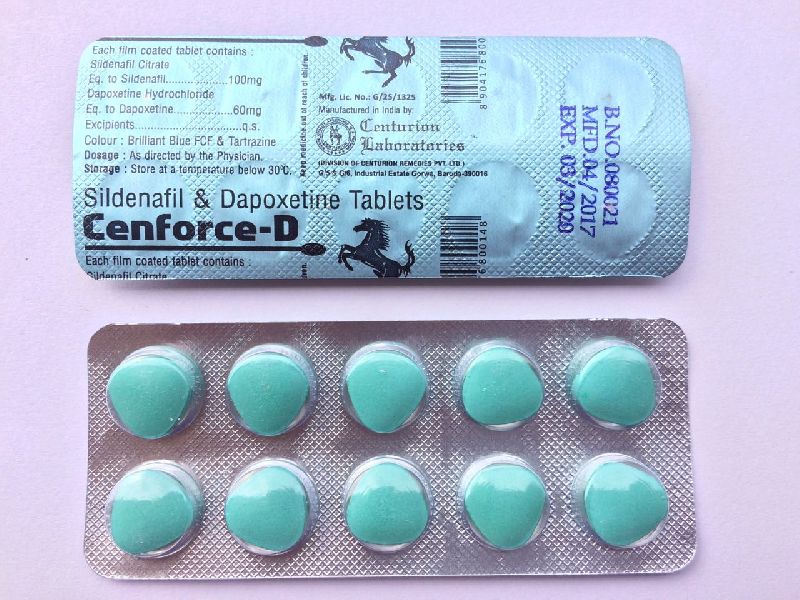 Depending on the localization, the upper or lower eyelid turns red, swells, sometimes itching accompanies these symptoms. But you can’t scratch your eyes, otherwise you can spread the infection to neighboring tissues.
Depending on the localization, the upper or lower eyelid turns red, swells, sometimes itching accompanies these symptoms. But you can’t scratch your eyes, otherwise you can spread the infection to neighboring tissues.
Sometimes patients confuse the disease with allergies, other eye diseases, for example, they can take it for chalazion, conjunctivitis, inflammatory reactions that do not cause a decrease in visual acuity. But after about two days, the redness turns into an abscess (it looks like a pimple or boil), so even without special medical diagnostics it becomes clear that this is barley.
- Initial stage, before the appearance of an abscess: the skin of the eyelids begins to itch, it may develop a slight thickening (usually on the edge), patients note redness of both the skin and eyes, tearing without loss of visual acuity, feeling that there is a foreign object in the eye. The period lasts up to 3 days.
- Stage of suppuration when stye itself appears: symptoms change.
 On the eyelid, in the place of edema, a “pimple” appears, so the internal barley is easier to determine than the external one. But since the neoplasm usually hurts and itches even at rest (the pain can be aching or shooting), diagnosis is not difficult. Sensitivity to light may occur, and if the lachrymation did not begin in the previous stage, it may appear in this. If the disease is severe, then the patient may have a fever, he may complain of general weakness and body aches. The stage ends in 3 days.
On the eyelid, in the place of edema, a “pimple” appears, so the internal barley is easier to determine than the external one. But since the neoplasm usually hurts and itches even at rest (the pain can be aching or shooting), diagnosis is not difficult. Sensitivity to light may occur, and if the lachrymation did not begin in the previous stage, it may appear in this. If the disease is severe, then the patient may have a fever, he may complain of general weakness and body aches. The stage ends in 3 days. - Breakthrough stage, when purulent content comes out: swelling of the eyelid increases, a feeling of tightness may appear, the abscess becomes larger, and the skin on it is thinner, and the abscess bursts. But this does not always happen, sometimes barley does not go away on its own, and you have to seek help from an ophthalmologist who opens the boil. As a rule, pus comes out in one day, but the process can last 2-3 days.
- Healing stage, when the pus came out: the inflammatory process is left behind, the eyelid heals (the process lasts up to a week).
 A crust may appear at the site of the breakthrough, you can’t touch it, it is also especially important at this time to follow the rules of hygiene.
A crust may appear at the site of the breakthrough, you can’t touch it, it is also especially important at this time to follow the rules of hygiene.
Is barley contagious?
The disease is not contagious, since there are no pathogenic bacteria on the surface of the abscess, they are inside and in small quantities. But after opening the barley, it is better not to forget about the basic recommendations, including the observance of hygiene rules, the use of individual personal hygiene products and the application of cosmetics.
Advertising block
2 300Р
1 900Р
3 770Р
7 520P
Treatment of barley
Usually the abscess erupts on its own without the help of an ophthalmologist. The pus comes out, the inflammation subsides completely, and the wound heals in a few days. But you can speed up this process or make it less painful.
The pus comes out, the inflammation subsides completely, and the wound heals in a few days. But you can speed up this process or make it less painful.
How to treat barley yourself
- Apply a dry, warm object. When symptoms appear, a warm clean soft cloth, a warm boiled egg wrapped in a towel, or something else can be applied to the abscess – this will speed up blood circulation and shorten the stages of development of the abscess. Keep warm for about 15 minutes until the material cools down. The frequency of procedures is up to 4 times a day, the duration of the course is until the formation of a purulent head.
- Take vitamins. All body systems are closely connected, so it is important to strengthen the immune system. It is optimal if the medications are selected by an ophthalmologist or other specialist after the examination, depending on the cause of barley and the general condition.
How not to treat barley at home
- Cauterize barley with a solution of calendula, rubbing alcohol or other tinctures.
 There is a lot of information about the effectiveness of these methods, but in practice they have not proven their effectiveness.
There is a lot of information about the effectiveness of these methods, but in practice they have not proven their effectiveness. - Press barley. This can only be done by a medical specialist after diagnosis, if indicated and with the help of special tools. The reason is that the blood circulation in the eyelids is very plentiful: if the barley is squeezed out incorrectly, the infection can enter the bloodstream, provoke infection and cause a number of complications.
- Make tea lotions. Alternative methods of treatment are ineffective. And if the tissue is touched, then, as in the case of extrusion, the infection can spread to the tissue nearby. Such self-treatment can adversely affect both vision and the state of the body as a whole. You can also use lotions from chamomile, St. John’s wort and other herbs only with the permission of a doctor.
- Take antibiotics. The treatment program is selected by an ophthalmologist after the diagnosis.

When to see a doctor
- Multiple or recurrent stye. These situations indicate malfunctions in the body, so you may have to visit not only an ophthalmologist, but also other medical specialists. Among the likely tests: checking blood for sterility, for sugar, diagnosing the state of immunity.
- Concomitant symptoms have appeared. For example, fever, body and joint aches, headache, enlarged cervical lymph nodes.
- Pain and swelling increase and are difficult to bear.
- The disease does not go away longer than 10 days (from the moment the first symptoms appeared, but the barley did not “break through”).
- Barley appeared in a child.
Treatment methods for barley: what treatment can a doctor prescribe after diagnosis
Medication: drops, ointments, tablets, etc. The use of drugs is aimed at improving the whole body, normalizing the functioning of the sebaceous glands, they can suppress the symptoms of barley, for example, pain, etc.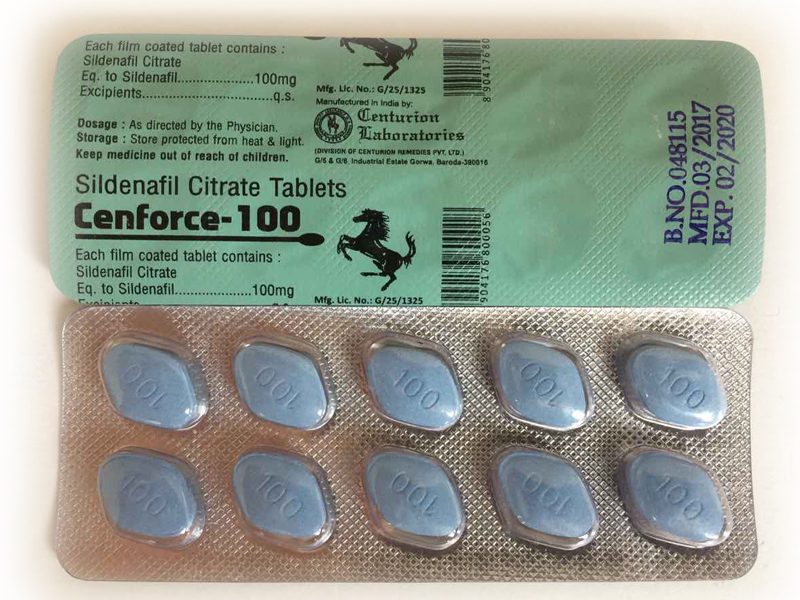 All recommendations for the treatment of purulent inflammation must be followed, it is also important to study information about the storage conditions of the drugs, otherwise the therapy will be ineffective.
All recommendations for the treatment of purulent inflammation must be followed, it is also important to study information about the storage conditions of the drugs, otherwise the therapy will be ineffective.
- UHF therapy. This is also the effect of heat, but already under the supervision of a specialist.
- Operation. Used if other methods have not helped, there is a risk of infection in the blood, the patient’s condition is severe or there are complications.
Barley medicines
All medicines are selected by the doctor after diagnosis. This is important because the preparations differ:
- contraindications: some should not be used by children, lactating and pregnant women;
- application time: drops are suitable for use at any time, the ointment is placed behind the lower eyelid before going to bed;
- side effects: ointments may blur vision;
- site of application: if the abscess is on the inner surface, the drug will come into contact with the mucosa, so the choice of drugs is limited.

Barley preparations
- Eye drops. Most often, these products contain an antibiotic, so they can fight staphylococci and fungi, as well as many dangerous bacteria that cause barley. Usually, after diagnosing an eye disease, the doctor recommends the following drops: Floxal, Vitabact, Albucid, Vigamox, Levomecitin, Tobriss, Fucitalmic, Gentamicin. Depending on the instructions, they are dripped from 3 to 6 times a day, the bottle itself should not come into contact with the structures of the eye.
- Ointments. They reduce the activity of bacteria in the affected area, have antiseptic and anti-inflammatory effects, relieve pain, swelling, redness, and accelerate regeneration. But ointments cloud vision, so they should be applied before bedtime, sometimes not on the edema itself, but on a gauze bandage. Popular eye preparations include: Floxal, Oftocypro, Tetracycline, Erythromycin ointment, Maxitrol. Excess ointment can only be removed with a napkin moistened with an antiseptic.

What must not be done during treatment?
- Rub your eyes.
- Wear contact lenses.
- Use cosmetics.
- Violate the rules of hygiene.
- Use expired products.
- Self-medicate.
- Rinse eyes with running water (should be filtered or boiled) and with dirty hands (should be washed with soap).
How to treat barley in children?
Barley in a child is a reason to go to the clinic to see a doctor. The reason is that it is difficult for children not to scratch their eyes, moreover, the disease at a young age is often recurrent. Only a doctor will select recommendations and prevent the development of complications and the recurrence of inflammation.
Barley prophylaxis
Compliance with the rules of personal hygiene, as well as wearing contact lenses, the rejection of cheap cosmetics, the habit of regularly cleaning the surface of the eyelids and not touching the eyes with your hands are one of the basic rules for preventing the disease.


 (2021).
(2021).  Usually it is not as noticeable as the external one, and does not cause much discomfort.
Usually it is not as noticeable as the external one, and does not cause much discomfort.

 On the eyelid, in the place of edema, a “pimple” appears, so the internal barley is easier to determine than the external one. But since the neoplasm usually hurts and itches even at rest (the pain can be aching or shooting), diagnosis is not difficult. Sensitivity to light may occur, and if the lachrymation did not begin in the previous stage, it may appear in this. If the disease is severe, then the patient may have a fever, he may complain of general weakness and body aches. The stage ends in 3 days.
On the eyelid, in the place of edema, a “pimple” appears, so the internal barley is easier to determine than the external one. But since the neoplasm usually hurts and itches even at rest (the pain can be aching or shooting), diagnosis is not difficult. Sensitivity to light may occur, and if the lachrymation did not begin in the previous stage, it may appear in this. If the disease is severe, then the patient may have a fever, he may complain of general weakness and body aches. The stage ends in 3 days. A crust may appear at the site of the breakthrough, you can’t touch it, it is also especially important at this time to follow the rules of hygiene.
A crust may appear at the site of the breakthrough, you can’t touch it, it is also especially important at this time to follow the rules of hygiene.

